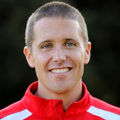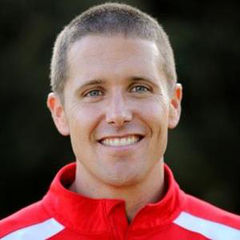Foundational motor abilities (FMAs) provide a foundational building block for the development of nearly every physical skill. A key component of this foundation is perceptual motor skills, which enable children to explore their physical environment with their senses and provide motor output. Base functional strength and power, as well as postural stability and mobility, are also critical aspects of developing a foundation of FMAs. These foundational building blocks of physical literacy—and how to use drills and games to build them—are discussed in greater detail below.
Base Functional Strength and Power
Base functional strength refers the ability to efficiently exert enough force to move the body or an external load in any plane of motion to accomplish a motor output based on sensory input.
This is not an expression of maximal strength, but rather a threshold capacity to safely and effectively perform gross movement patterns. An appropriate level of base functional strength and power creates a foundation to be able to perform nearly every physical activity. A child’s ability crawl, stand, walk, run, climb, jump, hop, etc. while maintaining an appropriate degree of postural integrity displays a functional level of base strength and power.
With the modern patterns of youth inactivity, strength-to-weight ratios have become greatly compromised. Increasing numbers of children are unable to achieve the threshold strength to mobilize their body weight effectively. By creating environments that require children to move their body weight in a variety of positions, orientations and environmental conditions, health and fitness professionals can help all children improve their base functional strength and power. In turn, they become more competent and confident with movement for life.
Recommended drills/games: Variations of sit-to-stand drills and games, climbing, crawling, rolling, obstacle courses, jumping activities, pulling and pushing large objects, and whole-body support activities (hanging, planking)
Postural Stability and Mobility
Postural and joint mobility and stability refers to two different developmental concepts.
Postural stability and mobility refers to the ability to maintain integrity and balance amidst external forces such as gravity to stay upright. Children develop this fundamental skill by learning to navigate different surfaces (concrete, dirt, sand, slopes, stairs, etc.) while maintaining balance and efficient movement.
While most youngsters naturally develop adequate postural mobility and stability to stay upright while they are mobile, an enriching environment that provides them progressive challenges aids in further development of this essential component of the foundational building block of physical literacy.
Joint mobility and stability refers to an ability for the joints involved with a movement to execute an appropriate range of motion while not compromising joint integrity. Young children are often hypermobile and their neural system must learn to stabilize “loose” joints. As children begin to grow, tissue and muscle fascia can lose pliability, particularly when they are inactive or during a period of heightened growth. The result is a loss in the range of motion of a joint.
Various pathologies can also limit joint mobility and stability at a young age. When health and fitness professionals can target, assess and program for appropriate joint mobility and stability, kids can increase their ability to move efficiently while decreasing the likelihood of pain and injury.
Recommended drills and games: Movement observation during activities (assessment), flexibility drills, activities that require large ranges of joint motion (over/under hurdles, climbing, throwing, high steps, sit to stand games), and balance/strength activities that stabilize joint range of motion.
As described in an earlier blog, these foundational motor abilities help build physical literacy the way that learning sounds is a foundational component of learning to read words. In the next article in this series, we will build on these critical movement “sounds” by creating fundamental movement skills. These are the “words” of physical literacy and form the second foundational level of building the ability to move for life.




 by
by 









 by
by